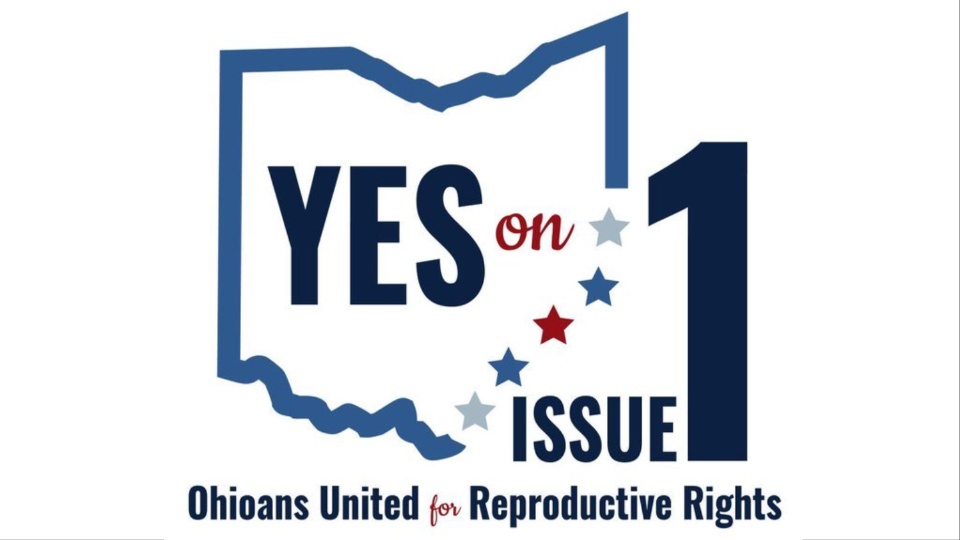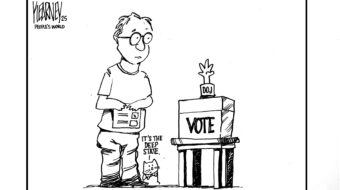
On Nov. 7, Ohio voters will cast their votes on Issue 1, a ballot measure that would add a state constitutional right to “make and carry out one’s own reproductive decisions.” If Issue 1 passes, it would secure the right to an abortion up to fetal viability, typically around 23 weeks, after which the state would be allowed to restrict abortion except when it is necessary to protect the pregnant patient’s life or health.
Voting “YES” supports this amendment, and voting “NO” opposes it. In August, Ohio voters defeated a different “Issue 1” that would have required a 60% vote to pass citizen-initiated constitutional amendments. This means that November’s Issue 1 requires a simple majority vote (50% plus one) to be approved.
Abortion is currently legal in Ohio up to 21 weeks and 6 days of pregnancy. When federal recognition of abortion rights was overturned by the U.S. Supreme Court in the case Dobbs v. Jackson Women’s Health Organization on June 24, 2022, State Senate Bill 23 (also known as the “heartbeat bill”) went into effect within hours.
This measure banned abortions in Ohio after six weeks, with no exceptions for cases of rape or incest—until a lawsuit brought by abortion clinics put the ban on hold.
If Ohio voters pass Issue 1 next month, abortion rights will be protected in the state constitution and the six-week ban will become unconstitutional. If Issue 1 is not passed, the hold could be removed at any time by the GOP-controlled Ohio Supreme Court and the restrictions would go back into effect.
The six-week ban was enforced for almost three months following the Dobbs decision and resulted in a measurable decrease in the number of abortion procedures performed in the state, according to newly released data from the Ohio Department of Health.
It is estimated that more than 1,500 patients who would have received care in Ohio were not able to access abortions during June and July 2022. Undoubtedly, this placed an extreme burden on many patients, who were forced to make a decision between traveling out of state, self-managing their own abortion, or carrying their pregnancy to term.
Abortion restrictions are generally expected to lead to increased rates of maternal mortality, which are already extremely high in Ohio and disproportionately higher for Black pregnant people than white due to structural and medical racism. Abortion laws like the six-week ban will likely worsen health inequities among Ohioans.
Q&A on Issue 1
Will the amendment allow “late-term” abortions and abortions “up to birth”?
Answer: Abortion “up to birth” is an unrealistic and misleading term, suggesting the termination of a pregnancy at literally the moment before birth. In 2020, less than 1% of abortions in the U.S. were performed at or after 21 weeks, making them extremely rare. Almost all of these were typically because of the diagnosis of a fetal anomaly or medical condition that is a risk to the mother’s life. [AP]
Can doctors subjectively decide when a fetus is viable and when an abortion is necessary to protect maternal health and safety?
Answer: “Doctors are guided by evidence-based medicine and are bound by [their] commitment to do no harm. The ‘heartbeat bill’ is an intrusion of government on personal autonomy and will directly lead to oppression, illness, and death of countless women.” [Ohio Physicians for Reproductive Rights]
Will Issue 1 open the door to infanticide? Does the amendment include the “‘right’ to neglect or abandon the newborn,” as claimed by the right-wing Alliance Defending Freedom?
Answer: Infanticide is illegal in the U.S., and the amendment wouldn’t change that. [AP]
Will Issue 1 sneak transgender rights into the Ohio Constitution? Does the language “including but not limited to abortion” include reproductive decisions allowing minors to undergo gender-reassignment surgeries without parental consent?
Answer: This proposal is not about gender-related health care. The phrase “including but not limited to abortion” refers to:
contraception;
fertility treatment;
continuing one’s own pregnancy;
miscarriage care; and
abortion. [Ohio Supreme Court]










